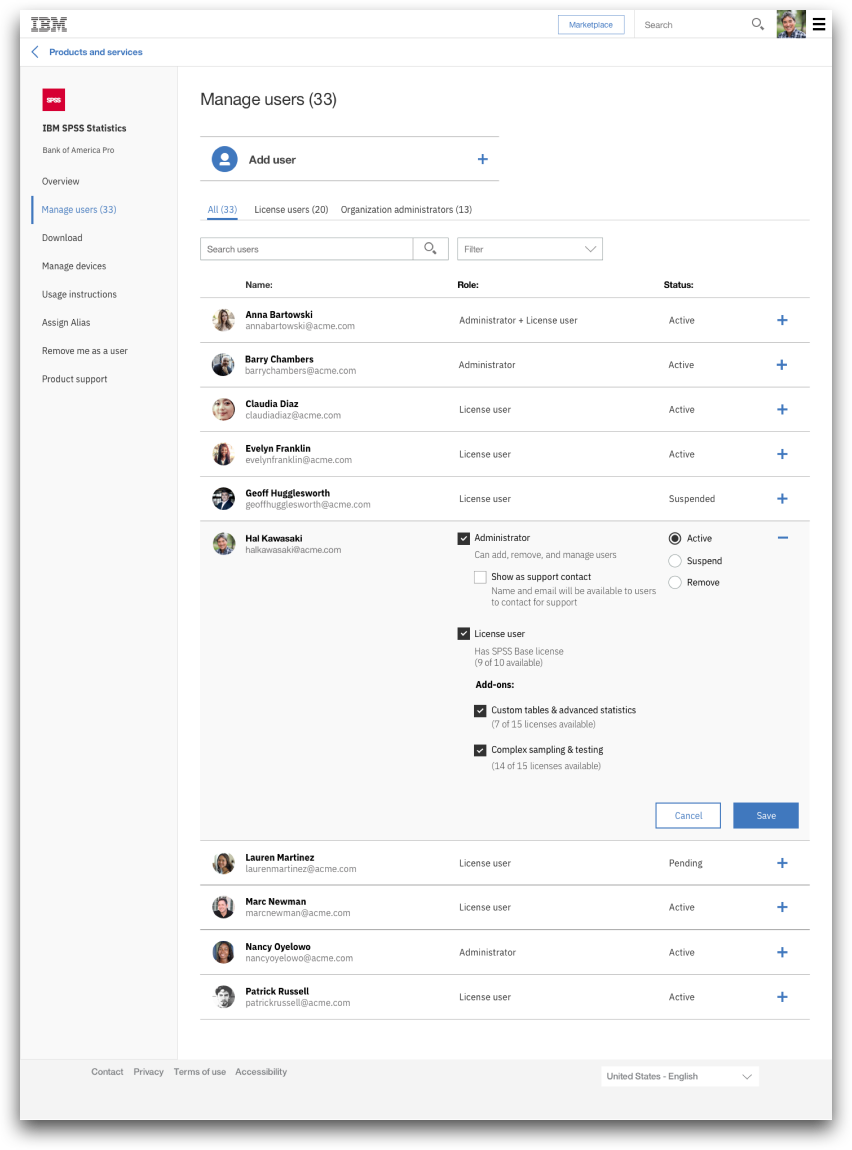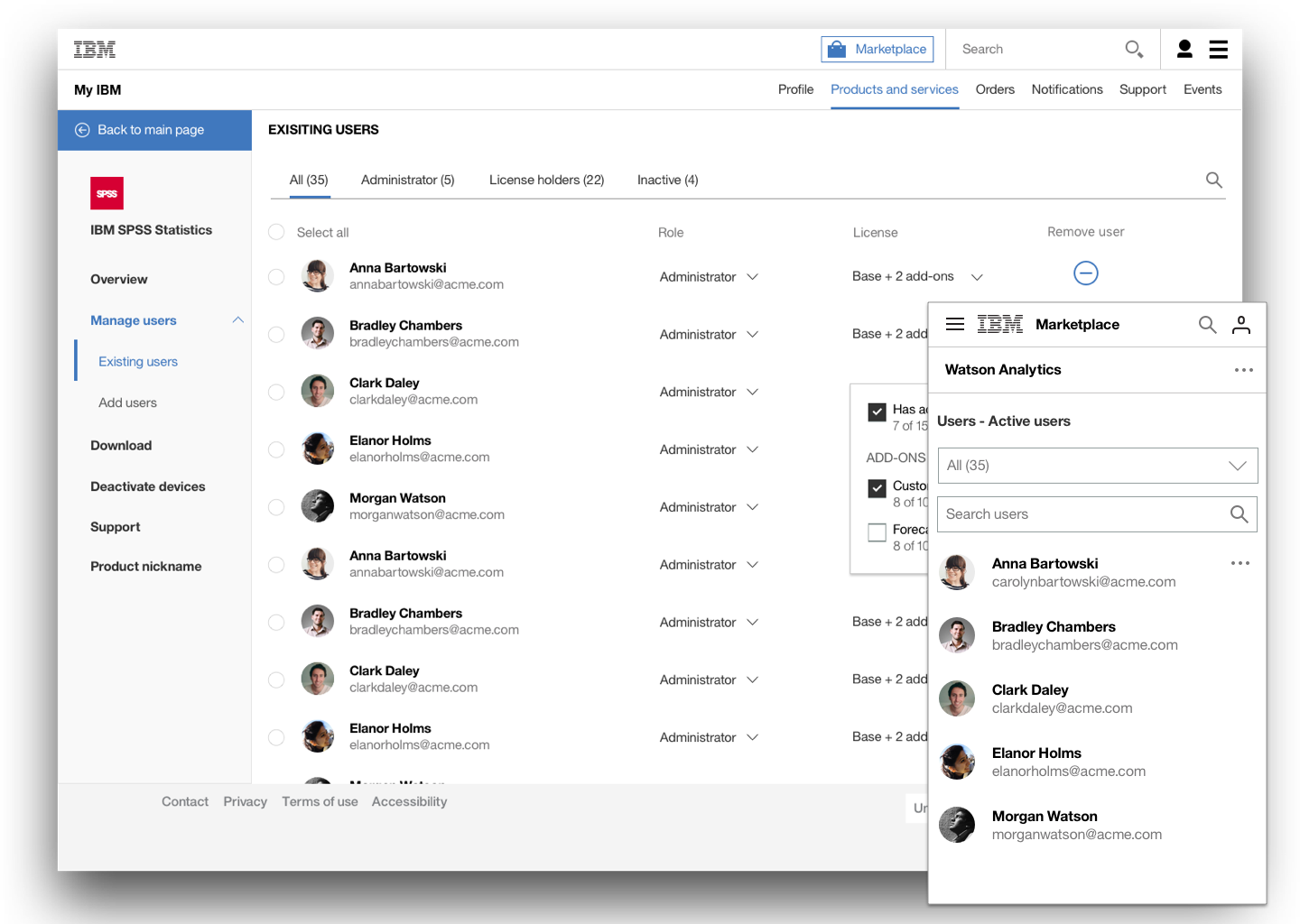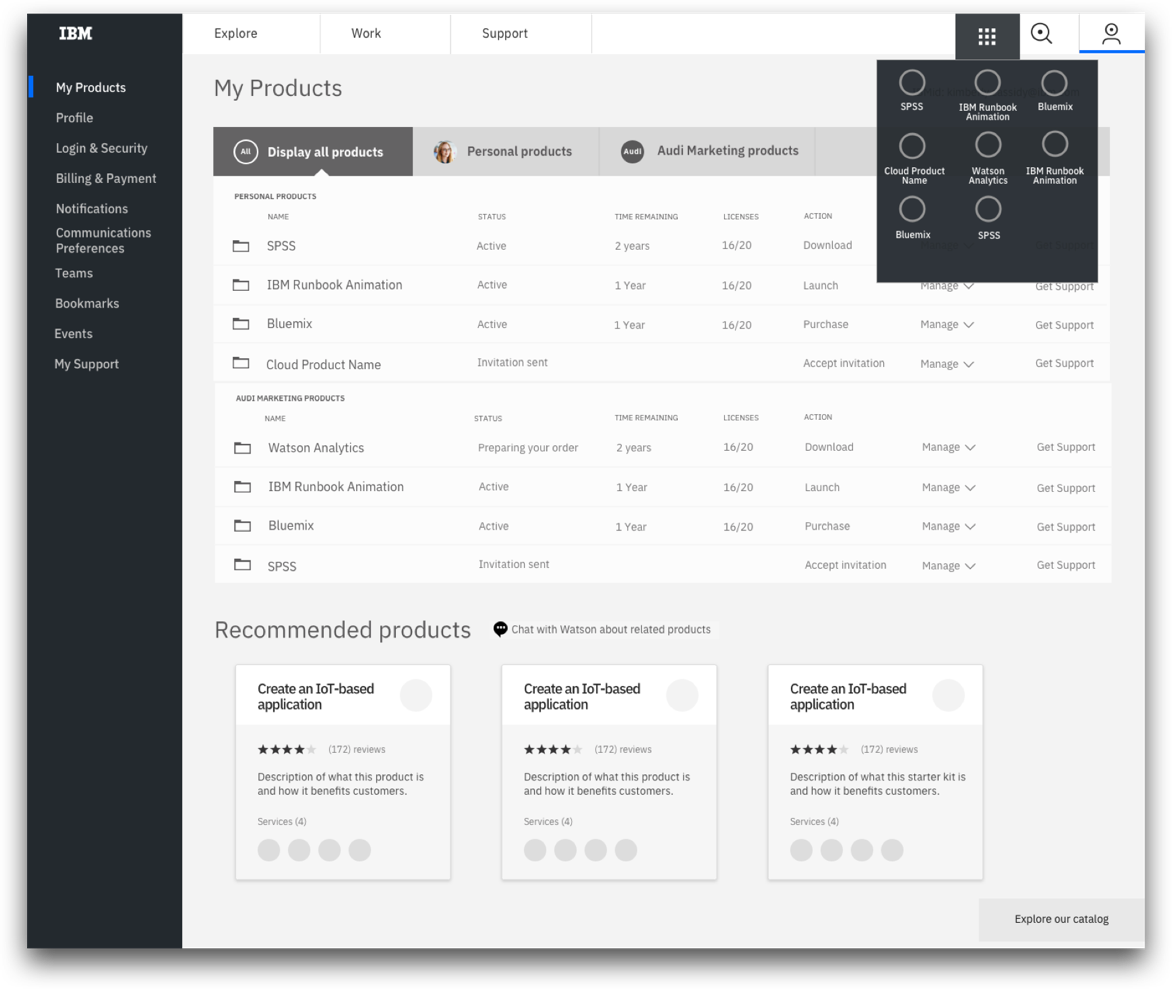My IBM Products and Services
Background
With the growth of SaaS-based products, IBM Products and services was created to be a centralized place for all IBM customers to access and manage all of their assets. Prior to its inception, customers had to manage multiple disconnected services for their different offerings.
This project spans over 2 years and went through different stages of development throughout as its scale and reach grew.
Project DETAILS
MY ROLE: UX DESIGNER
TIMELINE: 2015-2017
Core Design Team
Kevin paolozzi, design lead, 2015-2016
Kimberly cassidy, design lead, 2016-2017
Phase 1: MVP
We came up with a research plan to understand our users, including holding an internal Design thinking session to get a gauge of what user needs, features and functions should be prioritized. After a couple of iterations and testing, we had our design ready for MVP launch.
During the period of roughly a year, the project gained significant momentum, and grew in scope to include an entire ecosystem of IBM offerings that eventually came to be known as My IBM.
In the end, My IBM oversaw account creation and registration, personal profile, digital and physical asset management, order management, and payment settings.
Products and Services V2
I oversaw the continuous improvements as the product and marketplace evolved. One of the major changes I lead was the change of the manage section from a splitter/bulldozer since the limited real estate could no longer support the increased scale required for new features.
The redesign allowed for greater functionality and flexibility (after several iterations, prototypes, and testing). Users can more easily manage their people, permissions, and assets. A redesign for this format was required of all of the pages, which gave us an opportunity to improve and optimize for ease of use.




As My IBM continues to expand in scope and functionality, such as the addition of an order history section, I lead the design of new pages. At this point, I co-lead the design for the My IBM experience across its multiple pillars.
Re-defining My IBM
As new components and features continually crept into the My IBM experience, we needed a way to assess if they were appropriate for our scope. Our team needed to re-evaluate our mission and purpose to truly unify (previously siloed components) My IBM into a cohesive experience.
Throughout my experience, my secondary role was design thinking advocate as our teams were largely unfamiliar with most of the practices. I took this opportunity and I worked alongside my design lead, Kim, to put together a plan for a design thinking workshop with our offering managers to define crucial themes for My IBM’s identity. We outlined outcomes, goals, and an agenda for a 3-day workshop. I lead planning and prepping for the design thinking exercises.
I facilitated our team through design thinking activities focused on understanding our users, and refining our roadmap for the year, along with strategy. We walked away with a renewed team purpose, mission, vision, product principles, a strategy to get to our next goals, and a roadmap for 2017.
The outcome of the meeting was very successful; our product managers had a better understanding of the design process, how little we knew about our users, and how important user research was to our success. They also seemed invigorated by clarifying the direction of the product in their charge.
One IBM
Our efforts happen to align with our company and business unit to unify and have consistency across our experiences. Around the same time, the next evolution of our design language was being developed and tested. We took part in being one of the first adopters to pilot applying it to our work and give feedback.
This required direct collaboration with the design language and Cloud OS teams. Their prior work would inform us on ways to explore different models of how a user interacts with IBM.com
Explorations throughout different aspects of our product with the new design language.




This was a fun and rare opportunity to collaborate with other teams and test out a design system. It inspired us while we were rethinking our own system and how it could be work together more cohesively. I joined a different team right around this time and didn’t get to see this go forward.
Impact
We successfully designed and delivered a global product that serves thousands of users from the ground up in less than 3 months. We made continuous improvements as the product expanded in services and scale over time and influenced the strategy and vision of its growth. A large portion of the design work we created remains a crucial part of the user experience today and serves as a foundation for the adjacent experiences and ongoing improvements and evolution of the platform.
I learned how to work with ambiguity amidst strict deadlines, be resourceful to gather the minimal information needed to deliver something viable and valuable. We had to make do with the limited knowledge and resources about our broad user base, and accommodate for even broader use cases. At the same time, I also learned how to effectively communicate to advocate for design thinking and push for incremental improvements in our team culture and practices. I learned how effective a team can overcome non-ideal conditions when the collaborators are open-minded and willing to leverage each others’ strengths.






